Karun River: A Must-Visit Destination in Iran
The Karun River is the longest and largest river and the sole navigable waterway in Iran, coursing through the picturesque Bakhtiari Mountains and the Khuzestan plain before joining the Shatt al-Arab.
With a length of approximately 900 kilometers, it weaves its way through Chaharmahal and Bakhtiari Province before reaching Khuzestan Province. As it passes through Ahvaz, the river divides the city, graced by magnificent bridges like the historic Black Bridge and the iconic White Bridge.
Throughout the years, the Karun River has played a crucial role in the expansion of agriculture, livestock farming, and tourism in its surrounding cities and regions.
In this article, we will discuss everything you need to know about the Karun River including its location, history, length, and facts and myths about this beautiful river.
About Karun River
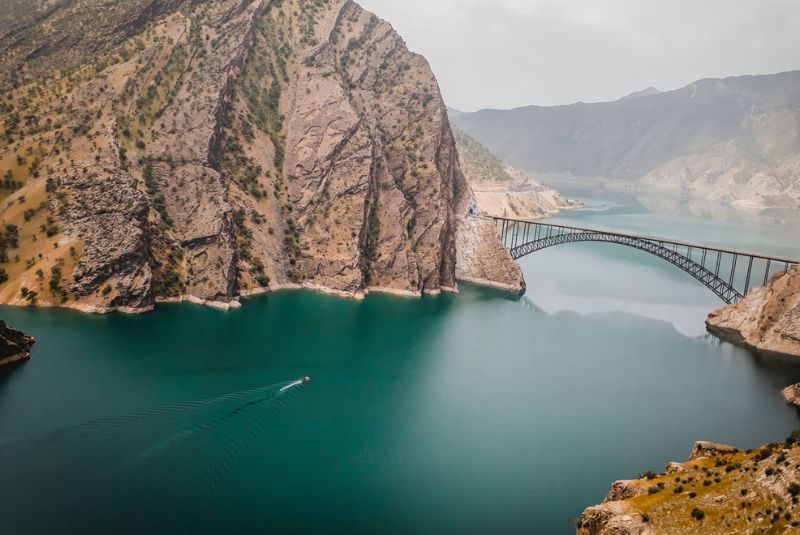
The areas surrounding the Karun River have been among the earliest regions of ancient Iranian civilization, and over many years, this river has brought prosperity to numerous regions in southern Iran.
Today, the Karun River is recognized as the most prominent natural landmark in Khuzestan Province. The city of Ahvaz relies on this river to meet its water needs, and several other cities in Khuzestan are also situated along its banks. Shushtar, Masjed Soleyman, Khorramshahr, and Izeh are located near the Karun River. This river originates from the heights of Chaharmahal and Bakhtiari Province and extends into Khuzestan Province.
The Karun River is known as the longest and largest river in Iran. It flows with free waters and traverses entirely within Iran. The Karun River is the most abundant, largest, longest, and only navigable river in Iran, making it doubly significant due to its access to international waters.
In addition to supplying drinking water to many surrounding areas, the Karun River is crucial for commercial shipping, agricultural expansion in Khuzestan, providing energy to nearby cities, and boosting tourism in the region. Furthermore, the livelihood of many livestock in Khuzestan depends on the Karun River, as the animals in this region cannot withstand the heat without the Karun's water.
The beautiful scenery of the Karun River in cities like Ahvaz, Shushtar, and the surrounding areas attracts a significant number of tourists. Evening strolls along Ahvaz's coastal road, enjoying the breathtaking views of the Karun River's bridges while indulging in the music of southern Iran, create a unique atmosphere.
The White Bridge in Ahvaz is one of the most famous bridges on the Karun River, symbolizing the city. Along the riverbanks, various restaurants and local kitchens offer delicious regional cuisine to visitors.
The White Bridge in Ahvaz is nearly 500 meters long and, for safety reasons, traffic on the bridge is one-way. A small island in the middle of the Karun River, between the river and the White Bridge, adds to the bridge's attractiveness. Currently, this island has been transformed into a small park that offers a beautiful view of the White Bridge and the Karun River at night.
In found inscriptions from the surroundings of the Karun River, it is referred to by names such as "Karnag" and "Kuhrang." Some ancient travelers have also mentioned the Karun River as the "Nahr Al-Arzagh."
In the Bakhtiari dialect, the word "Kar" means "son," and according to some historians, the word "Karun" has evolved from the combination of the words "Kar" and "Rown," meaning "flowing water," gradually becoming "Karun."
| Related: Iran’s Top 10 Seas and Lakes to Explore
Karun River Depth
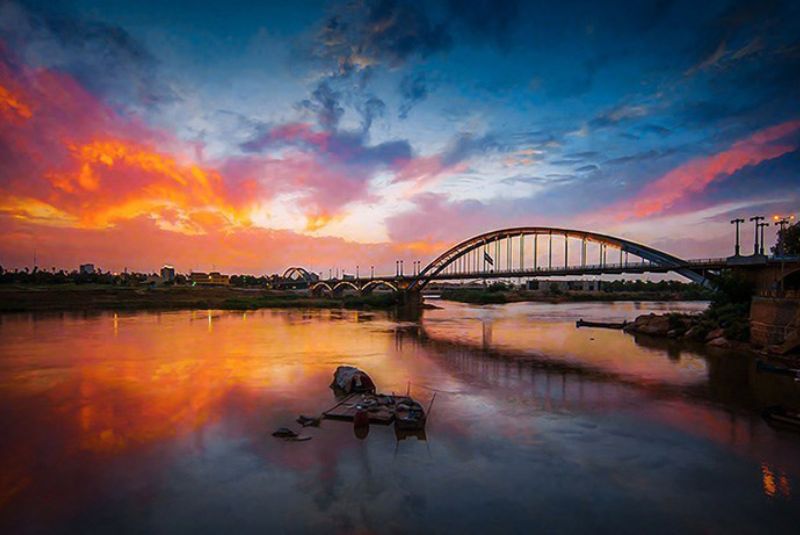
The Karun River flows among the mountains surrounding Khuzestan. The depth of the Karun River varies during rainy and dry days. Different parts of this river also have different depths.
The maximum depth of the Karun River reaches about 21 meters during rainy days, especially in deep areas. Shallow areas have a depth of about one and a half meters.
The distance between Khormoj and Bandar-e Khor is approximately 190 kilometers and forms a suitable space for ship traffic, as it is the confluence of the Dez and Karun rivers. In the past, a greater variety of fish inhabited the waters of the Karun River, but their diversity has decreased over time.
| Suggestion: Top 20 Most Beautiful Waterfalls in Iran
Karun River Length
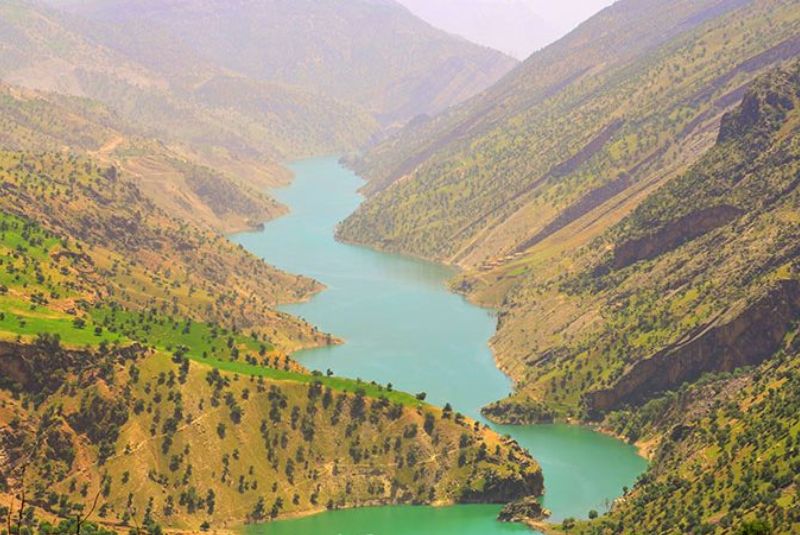
The Karun River is known as the longest river in Iran and one of the most remarkable sights in Khuzestan. The length of this river reaches 950 kilometers, and its entire course is within Iran, which emphasizes the importance of the Karun River.
On the other hand, this river is connected to international waters and oceans. In the past, there were more branches of the Karun River than today, but currently, the volume of water and branches has significantly reduced compared to the past. The length of the Karun River is measured only along its main course, without considering other branches, which is referred to as the Greater Karun.
| Also read about: Top 10 Forests and Jungles of Iran
Karun River Map

The Karun River originates from the Zagros and Zardkuh Bakhtiari mountain ranges in the Chaharmahal and Bakhtiari provinces. The elevation of these mountains reaches over 3,000 meters above sea level. More precisely, this river flows from the mountains of Armen, Kuhrang, and Bazoft and passes through various cities in the Khuzestan Province along its course.
The major part of the Karun River, formed by the confluence of the Dez River with the Karun River, provides suitable conditions for navigation. The Karun River passes through the cities of Shahr-e Kord, Borujen, Lordegan, Izeh, Masjed Soleyman, Shushtar, Ahvaz, Khorramshahr, and Karun County.
In addition to the main branches of the Karun River, other tributaries join the river along its course, originating from different mountains. Some of the rivers from the northern slopes of Mount Dena in Semirum and Fereydunshahr, the Khersan River from the slopes of Mount Dena in Kohgiluyeh and Boyer-Ahmad, and the Eli-Gudarz Rivers in Lorestan, all flow through a winding path and eventually reach Gotvand in the Khuzestan plain and join the Karun River.
| Read more: Iran's Deserts - Ultimate Guide + Pics
The Course of the Karun River
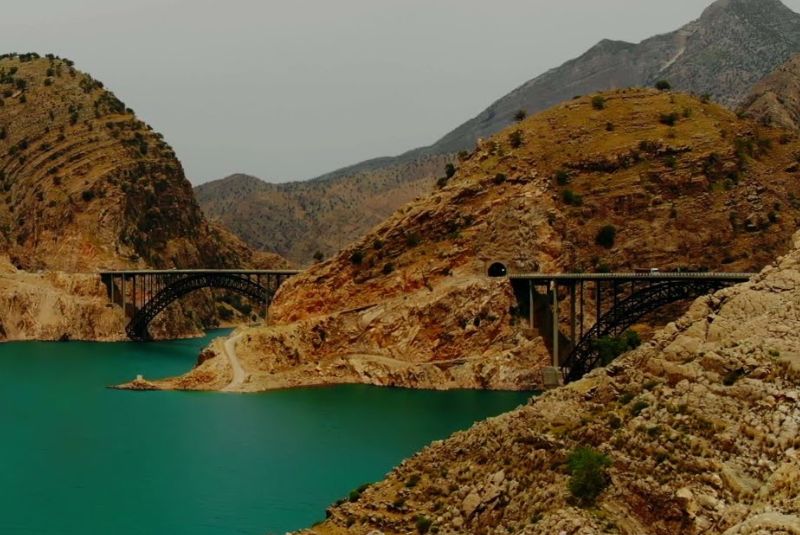
The Karun River originates from the Chaharmahal and Bakhtiari Province and reaches the Khuzestan plain in the Gotvand area. Continuing its journey through various cities in the Khuzestan Province, it divides into two parts and flows into the Arvandrud (Shatt al-Arab) and the Persian Gulf.
The maritime transportation route of the Karun River from Ahvaz to Arvandrud is one of the most important routes for the import and export of goods. The convenient access and proximity of the Karun River to the international ports of Bushehr and Imam Khomeini in southern Iran make it a preferred transportation route.
Maritime transportation is considered one of the most cost-effective routes for commercial exchanges. However, in recent years, due to the decrease in water level in the river, navigation in the Karun River is no longer feasible, although the history of navigation in the Karun River goes back to the Qajar dynasty.
| Suggestion: Iran's Top 14 National Parks Every Tourist Should Visit
Dams of the Karun River

Due to the vast volume of water it carries, various dams have been constructed over time on the Karun River to provide energy, drinking water, and irrigation. The most important dams on this river are Karun 1, Karun 2, Karun 3, Karun 4, Masjed Soleyman (Ghadar Landar), Gotvand-e Aliya, and Gotvand Regulatory Dam.
Karun Dam is one of the oldest structures on the Karun River, located 50 kilometers northeast of Masjed Soleyman. This dam is also known as Shahid Abbaspour Dam. Karun 3 Dam in Izeh County is one of the largest and most famous dams in the country and is considered a tourist attraction in Khuzestan. Gotvand Lake is also one of the most beautiful and largest artificial lakes in Iran, attracting many tourists throughout the year.
The Most Famous Bridges Over the Karun River
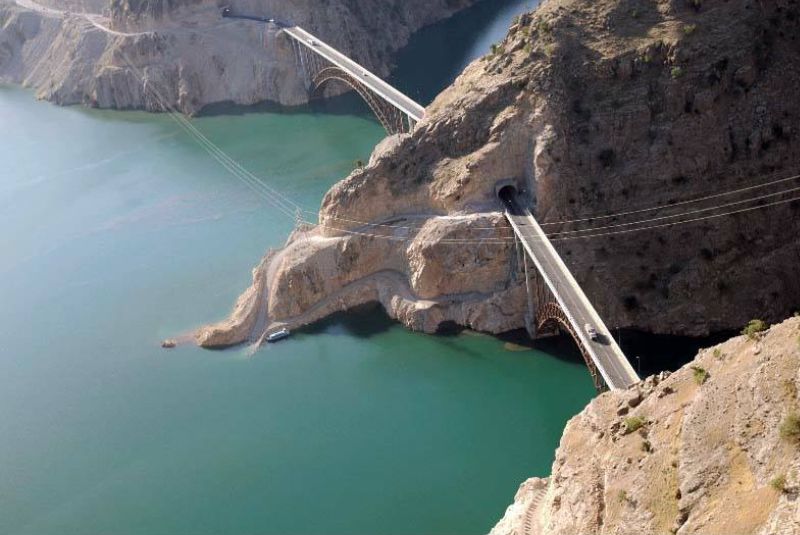
The city of Ahvaz has the most famous bridges over the Karun River. The oldest bridge in Ahvaz over this river is the Black Bridge, which was built in 1308. This bridge is only 6 meters wide and has a length of about 1,050 meters.
Another bridge over the Karun River in Ahvaz is called the White Bridge, which may be considered the most famous bridge on the Karun River. This suspended bridge with highly advanced architecture was built in 1315 and became the first suspended bridge in Iran. The White Bridge of Ahvaz is one of the prominent tourist attractions in the city.
The next bridge in Ahvaz was built in 1349, connecting Chahar Shir Square to the Kianpars area in the north. In the past, this bridge was used for commercial purposes, and for this reason, it is also known as the Transit Bridge. This bridge is approximately 500 meters long and 15 meters wide.
The fourth bridge in Ahvaz was built in 1354 in the city center over the Karun River. Its access to Naderi Street in Ahvaz turned it into one of the busiest bridges in the city, and for this reason, it was named Naderi Bridge. The fifth bridge in Ahvaz, built in 1375, is a dual-lane bridge. It is one of the widest bridges on the Karun River and plays an effective role in reducing the city's traffic load.
The Steel Industries Bridge and the Dialogue of Civilizations Bridge are among the other communication routes over the Karun River. The Steel Industries Bridge was built to access industrial factories, and the Dialogue of Civilizations Bridge, with beautiful lighting and artificial waterfalls, is one of the most beautiful bridges on the Karun River as well as a tourist attraction in Ahvaz.
The Cable Bridge of Ahvaz is the eighth bridge over the Karun River in the city, known for its prominent architecture, and it can be considered the most unique communication route over this river.
The ninth bridge in Ahvaz was built in 1392 on the third bridge. The design of this bridge is also very modern, and there are plans for its expansion. The latest bridge in Ahvaz over the Karun River is called Kianpars Nature Bridge, which is suitable for pedestrians and does not allow vehicles to pass. This bridge is located between Laleh Park and Kianpars Coastal Boulevard.
| Also might be interesting: Top 5 Bridges in Isfahan over Zayanderud River
Where Does the Karun River Flow?
Along the course of the Karun River, various branches separate from this river, and different rivers that originate from the mountains of surrounding areas flow into it. The most important branch of the Karun River is the Dez River. The Dez River flows in the city of Dezful and reaches the Karun River in the north of Ahvaz.
After reaching Khorramshahr, the Karun River divides into two parts. One branch goes to Arvandrud, which is one of Iran's border rivers with Iraq, and the other branch continues its course to the Persian Gulf and reaches the Indian Ocean. The Karun River also divides into two branches at the entrance of Shushtar, which are known as "Shatit" and "Gargar." These two branches reconnect with each other in the south of Shushtar.
Karun River Location
The Karun River is located in southern Iran, and its largest portion is in Khuzestan Province.
Karun River Facts
- The Karun River is the longest in Iran.
- The Karun River serves as a crucial waterway for transporting goods, particularly oil and petroleum products, from Khuzestan to the Persian Gulf.
- The Karun River supports diverse ecosystems and wildlife, including various fish species, and provides habitats for birds and other wildlife along its banks.
- The Karun River has historical and cultural significance, playing a role in ancient texts, and trade routes, and serving as a backdrop to iconic bridges in cities like Ahvaz.
Bottom Line
Visiting the city of Ahvaz and its attractions, including the Karun River, will undoubtedly be very pleasant and memorable for you. This river is referred to as the gem of Ahvaz.
If you have traveled to Khuzestan Province and the city of Ahvaz, don't miss the opportunity to see the Karun River. It is unlikely that anyone would travel to Ahvaz and not visit this remarkable river and its attractions.
Share your story!
Comment below and let us know about your Experience.
Your story inspires others!


Comment
Leave a Comment